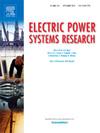A data-driven topology identification method for low-voltage distribution networks based on the wavelet transform
IF 3.3
3区 工程技术
Q2 ENGINEERING, ELECTRICAL & ELECTRONIC
引用次数: 0
Abstract
A comprehensive knowledge of topology is of great importance for the effective operation and maintenance of distribution networks. This paper contributes with a novel data-driven topology identification method for low-voltage distribution networks based on the wavelet transform. The method uses only energy measurements from smart meters, being compatible with the current European smart meter capabilities. The method identifies the feeder and phase topology of single and three-phase customers, even in unbalanced situations. A computationally-efficient methodology to link customers' time-frequency features with their network connection is proposed. The performance of the method is assessed on eleven non-synthetic networks, with a robustness assessment of factors such as network observability, dataset size, measurement errors, and Renewable Energy Sources (RES) penetration. Accuracy rates exceeding 95 % are obtained in most cases, outperforming an energy-conservation approach. A 98 % accuracy can be achieved with a 30-day hourly dataset if at least 80 % of network observability is provided. For lower observability levels, 45 or 60 days of data are needed to reach similar rates. The sensitivity analysis of measurement error demonstrated that it had a negligible influence on the results. The method showed favorable results even in scenarios with high-RES penetration, with accuracy values exceeding 95 %.
求助全文
约1分钟内获得全文
求助全文
来源期刊

Electric Power Systems Research
工程技术-工程:电子与电气
CiteScore
7.50
自引率
17.90%
发文量
963
审稿时长
3.8 months
期刊介绍:
Electric Power Systems Research is an international medium for the publication of original papers concerned with the generation, transmission, distribution and utilization of electrical energy. The journal aims at presenting important results of work in this field, whether in the form of applied research, development of new procedures or components, orginal application of existing knowledge or new designapproaches. The scope of Electric Power Systems Research is broad, encompassing all aspects of electric power systems. The following list of topics is not intended to be exhaustive, but rather to indicate topics that fall within the journal purview.
• Generation techniques ranging from advances in conventional electromechanical methods, through nuclear power generation, to renewable energy generation.
• Transmission, spanning the broad area from UHV (ac and dc) to network operation and protection, line routing and design.
• Substation work: equipment design, protection and control systems.
• Distribution techniques, equipment development, and smart grids.
• The utilization area from energy efficiency to distributed load levelling techniques.
• Systems studies including control techniques, planning, optimization methods, stability, security assessment and insulation coordination.
 求助内容:
求助内容: 应助结果提醒方式:
应助结果提醒方式:


